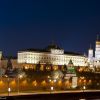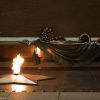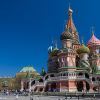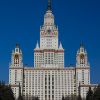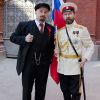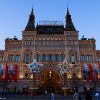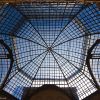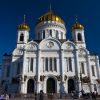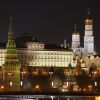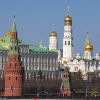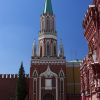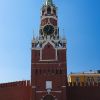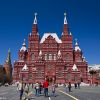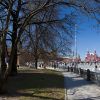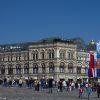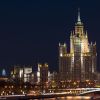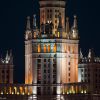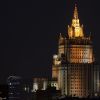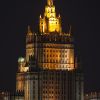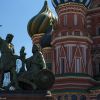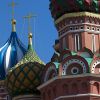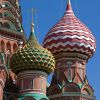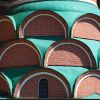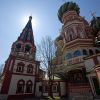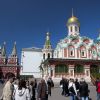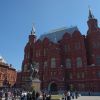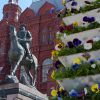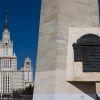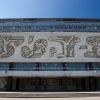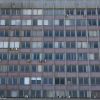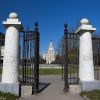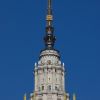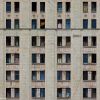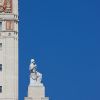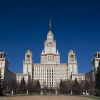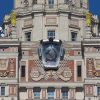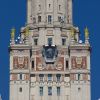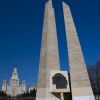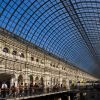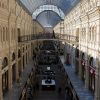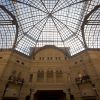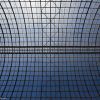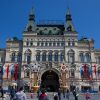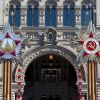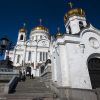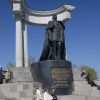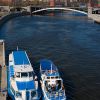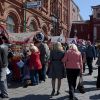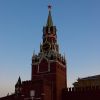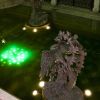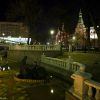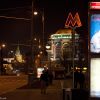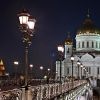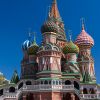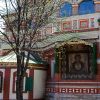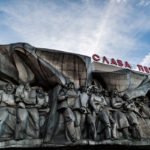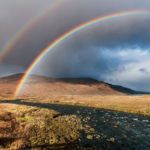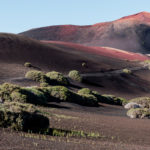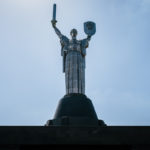Captivated by the Seven Sisters – Moscow
The Russian capital is a metropolis second to none. Metros departing every 90 seconds, sky scraping Stalin buildings, marble ornamented train stations and multi-lane roads rather worth to called highway than street. Moscow is always a visit worth and for us photographers an ultimate question will be answered: Size doesn’t matter; it’s all about the diameter.
My last trip to Russia, better to say to St. Petersburg, dates back to summer 2007. Hence it was definitely time again to pay a visit to our eastern neighbour. When I fly, then I usually use the air sickness bag as storage just to keep notes and documents together. In the face of AirBerlin’s in-flight magazine, the editorial and its undergraduate drivel brought into being by AirBerlin CEO Hunold, I could have used the bag for its original purpose plus claiming a second bag. It is a true miracle that the places of poster capitalist Hunold are flying to post-communist cities… Mister Hunold, instead of being a suppository for “our” Chancellorette you better should get back to you core business. A qualitative transportation as specified in the contract, also regards the baggage.
People wanting to elude from Sheremetyevo airport’s legendary unfriendliness are definitely better off at Domodedovo. Solely Domodedovo’s passport control is a real chokepoint. When 300-400 people, mainly of Russian descent, are seeking for admittance, then everything becomes a madhouse. Once you’ve made it through the border control there is nothing between you and your way to the city anymore. The easiest way to get to Moscow downtown is by taking one of the AeroExpress trains. By the way, don’t throw the AeroExpress ticket away, as it’s barcode is needed to get through the control gates at the end of the train ride.
A one-way ride with Moscow’s Metro costs 22 roubles. It allows you to move from A to B using the entire metro system. Though, sometimes signposting leaves a lot to be desired, as for example at Teatralnaya station (Театральная) you won’t find the transit to Ochotny Rjad (Охотный ряд) at first go. However, you can literally set your watch to the amazingly precise 90-second cycle of the arriving Metro trains. Moscow has surely more inhabitants than Berlin, hence there are more passengers to be carried, but when comparing the chronological quality directly, then the “experts” of S-Bahn and BVG have to take a back seat.
The Metro stations itself are already artwork. Photographing statues and marble mosaics isn’t that welcome, but looking and gazing definitely is. Most impressive are: Komsomolskaya (Комсомольская), Kiewskaya (Киевская), Park Pobedy (Парк Победы), Ploschad Rewoluzii (Площадь Революции) as well as Mayakowskaya (Маяковская) and Novokuznetskaya (Новокузнецкая).
The touristic hot spot is the area around the Kremlin, of course. On some days Red Square literally seems to brim over with visitors. Surprisingly most of them are coming Russia itself, as for many Russians, doesn’t matter where they are living, it is something very special to travel to the capital and its major places of cultural interest. If the sun is shining, then the gates to Red Square are a perfect place for having a photo together with the look-alikes that are reanimating Russia’s changeful history. Doing that, also crazy photo constellations like the revolution (Lenin) and the revolution’s reason (Tsar Nicholas II.) shaking hands come about. Another gem of the extremes is the entrance of the GUM big store, where in the middle an image of Jesus is framed by Soviet emblems. To boot, symmetrically seen there is the body of Lenin laid out just across the square. A very interesting constellation, especially when having a closer look at religion’s value at the time of Stalin & co…
The wall of the square being located between Resurrection Gate and Spassky Tower (Спасская башня) is 330 metres long and the central element of Red Square as it is a very important memorial place to commemorate to for example the first man in space, Jury Gagarin, and of course Vladimir Ilyich Ulyanov, better known as Lenin. On certain days of national importance the square even becomes completely closed to the public, for example on May 9th when the parade in honour of the victory over Nazi Germany is held. In the run-up to such holidays identity checks become more frequent and also the big grandstand is getting built up. Unfortunately then it’s not possible to have a look at the eastern wall of the Kremlin.
When entering the Red Square area with professional photo equipment it doesn’t take much time until the first FSO agent turns up. I already put up my tripod to take a panorama photo of the Red Square when a young guy in my age approached me. In Russian (of course) he asked me to stow away my photo equipment, as it is not allowed to take professional pictures of Kremlin and Red Square. Indeed, unless you haven’t a special permission, there’s a law that prohibits to take professional photos, while classifying every lense having a diameter above 67mm as professional. The service to protect the president and government controls that law, but cooperative behaviour plus gentleness will surely allow you to take home that kind of photo you actually wanted.
Moscow’s most impressive sight are the massive Stalinist style buildings, the so called Seven Sisters. For examples the spire of the apartment building at Kotelnitscheskaya street, that is overlooking Moscow river and downtown, can be seen from almost everywhere in the city centre. The biggest sister is the Lomonosov university, that is located in Moscow’s South West on top of the Sparrow mountains. The red Metro line takes you to the station of same name, which is University (Университет). But watch out, when coming from the Metro you will approach the building from the side, hence Lomonosov won’t seem as huge and massive as it actually is.
In terms of food Moscow is definitely able to surprise positively. At Bolshaya Nikitskaya road for example you can find a restaurant whose name CoffeeMania might be a bit confusing at first glance. Prices are above-average, actually on a European upscale level, but on the other hand you get excellent food. For example their sturgeon consommé is just brilliant… At Georgian and Armenian places you can get another great delicacy: dumplings filled with juicy meet called Khinkali.
A long weekend is yet not enough to see all of the major sight the Russian capital has on offer. The most interesting experience will be still around though, that is people and life. Even if a few people are gnarling, the Muscovites are like the Berliners: sometimes a bit cheeky, but hospitable, helpful and down-to-earth from the bottom of their hearts.
